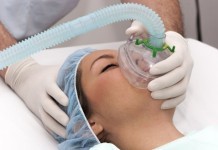NEW YORK, NY – Myocardial infarction, subarachnoid hemorrhage, sepsis, diabetic ketoacidosis: these are examples of what the medical community regards as “real diseases.” Unfortunately, our nation’s emergency department doctors and nurses are plagued with the task of sifting through legions of manipulative pretenders in order to find those patients that actually need help.

The Lancet of Emergency Medicine has recently published a triage form that accurately identifies patients that are actually sick. The decision tool is called AYAS (Are You Actually Sick) and it is rapidly being implemented in many emergency departments. The components of the AYAS decision tool are listed below.
Every “yes” answer is worth one point unless otherwise stated:
- Is the patient wearing sunglasses indoors?
- Does the patient request that his/her entire posse* be allowed into the ER room with them?
- Does the patient have >2 medical allergies?
- Does the patient have >2 piercings on non-auricular sites?
- Did the patient use the phrase “I KNOW my body!!”? (Extra point if the patient snaps his/her fingers on the word “KNOW.”)
- Could the patient’s first name make a halfway decent stripper name? (Examples include Amber, Destinee, or Misty.)
- Did the individual and a family member both check in as patients at the same time? (Extra point for each additional family member.)
- Did the fully-grown adult patient bring blankets from home to the ER? (Extra point for a stuffed animal.)
- Did you know the patient’s name before he/she showed you a form of identification?
- Is the patient crying loudly despite lack of kidney stone, gonad torsion, active labor, penetrating wound, severe blunt trauma, or dislocated joint?
- Did the patient try to convince you of his/her high pain tolerance?
*posse: 2 or more non-related individuals that accompany the patient everywhere
After using the screening tool, the triage nurse totals the score. The results are interpreted by the score chart.
| 0 | Actual disease possible |
| 1-3 | Actual disease unlikely |
| 4-6 | No testing needed, offer them 20 Percocets to leave |
| 6-8 | Page psych |
| >9 | Pretend to not understand English until the patient gives up and goes to another ER. Consider having a pseudoseizure |
So far, emergency department staff are thrilled with the results. Elaine Dickenson, an ER nurse from Queens, says, “I was able to discharge 30% of the patents from triage! Our wait times have hit the floor!”
ER physician Michael Duncan agrees, “And it’s no surprise that there have been no bad outcomes from implementing this decision tool. ER staff have known for decades that people that would score high on a decision tool such as AYAS are always full of bullcrap and are never actually sick. This study is a God-send because it allows us to act on what we already know to be 100% true!”
Harvard, Johns Hopkins, and other pretigious medical programs are already working to validate a modified AYAS decision tool that adds 10 points if the patient has fibromyalgia, psychogenic seizures, or the nerve to mention a gluten intolerance as a legitimate allergy.







